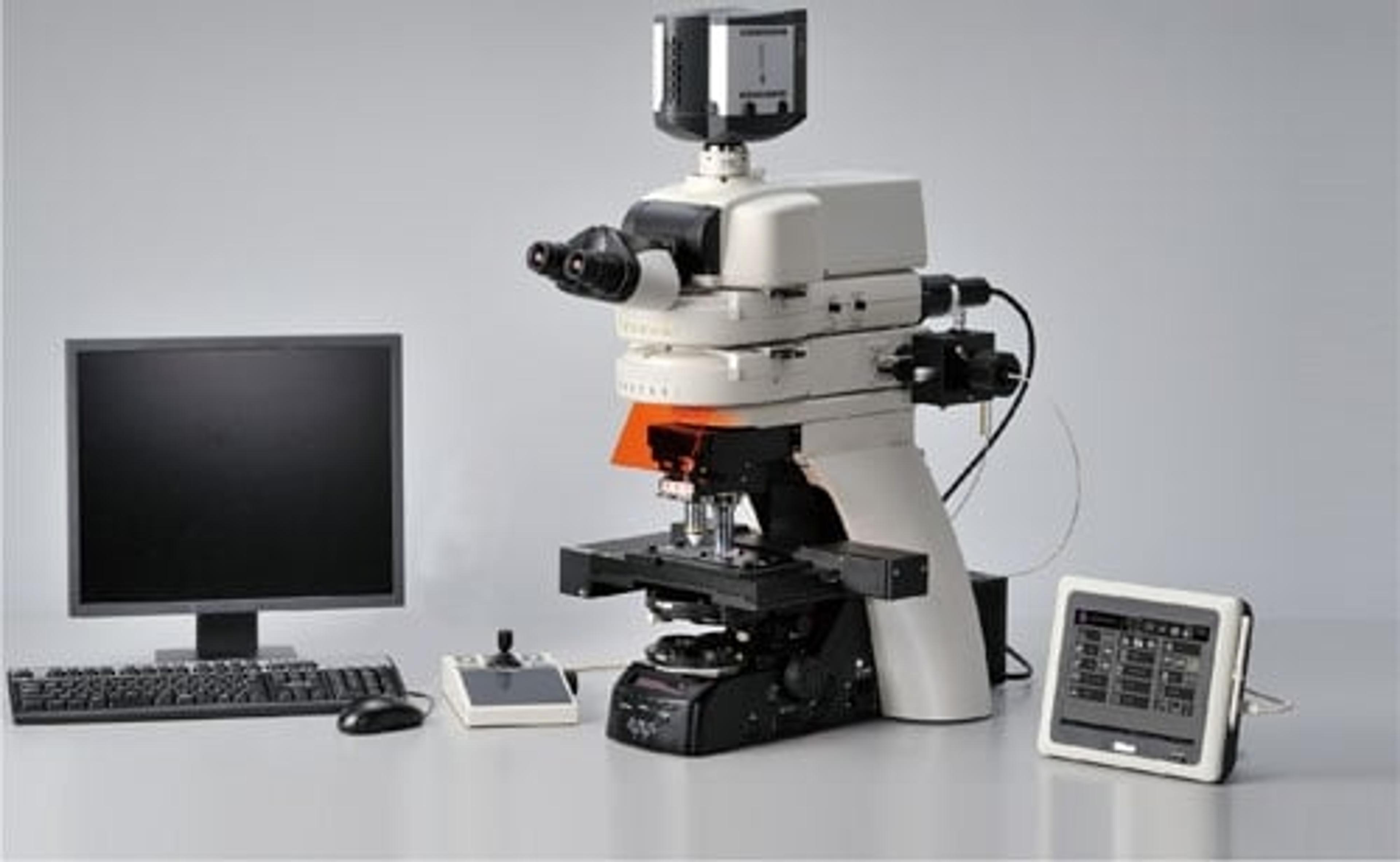Modular Upright Research Microscopes for Bioscience and Medical Research
14 Nov 2011Nikon have introduced the new Eclipse Ni series microscopes. Using core technology from Nikon’s Eclipse Ti inverted research microscope, the Eclipse Ni series offers multi-mode system expandability to meet the imaging needs of bioscience and medical research on one platform. The new Ni range also provides excellent optical performance with new CFI Plan Apochromat Lambda series objectives, and the flexibility of assisted observation by motorisation. The range comprises the fully motorised Eclipse Ni-E model with focusing nosepiece or focusing stage options, and the manual Eclipse Ni-U with motorisation upgrade capability.
Nikon’s proprietary stratum structure in the Ni series opens up a large range of imaging possibilities that can be upgraded at any time. Both models support research into the reactions and changes of stimulated cells with a newly developed photoactivation unit. The Eclipse Ni-E is also configurable for multiphoton imaging, as well as offering the option of fixed-stage configurations to meet the demands of experiments such as in vivo imaging for cardio vascular and neuroscience research applications.
The new Eclipse Ni microscopes use the latest version 4.0 release of NIS-Elements software enabling microscope, camera and confocal control, thereby removing the need for a laboratory to rely on separate software. Image acquisition and analysis is improved with over 100 new functions.
Optical performance is ensured through Nikon’s new CFI Plan Apochromat Lambda series objectives with Nano Crystal Coat technology. Transmission and chromatic aberration correction have been improved throughout the wide range of visible to near IR wavelengths (950nm), providing bright, high-contrast, high signal-to-noise ratio and multi-colour fluorescence images with no perceivable focus shift when used with any wavelength.
A comprehensive range of high speed, motorised accessories, specifically configured according to application, augment the improved features to meet all research requirements. Simple one-touch control buttons to the side of the microscope combine with improved ergonomic design for speed, ease of access and comfort for motorised focusing. The higher speeds of the motorised excitation and barrier filter wheel and the motorised shutter enable fast wavelength changes, reducing photobleaching of the specimen. A new Nikon motorised stage option is effective for applications that require highly accurate positioning, capture move and repeat experiments or image tiles stitching. Intelligently located electrical connections on each unit also minimise the number of connection cables for seamless and tidy integration.

